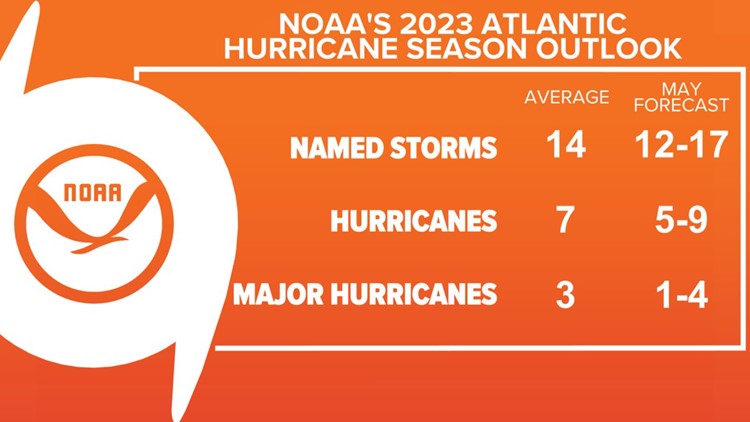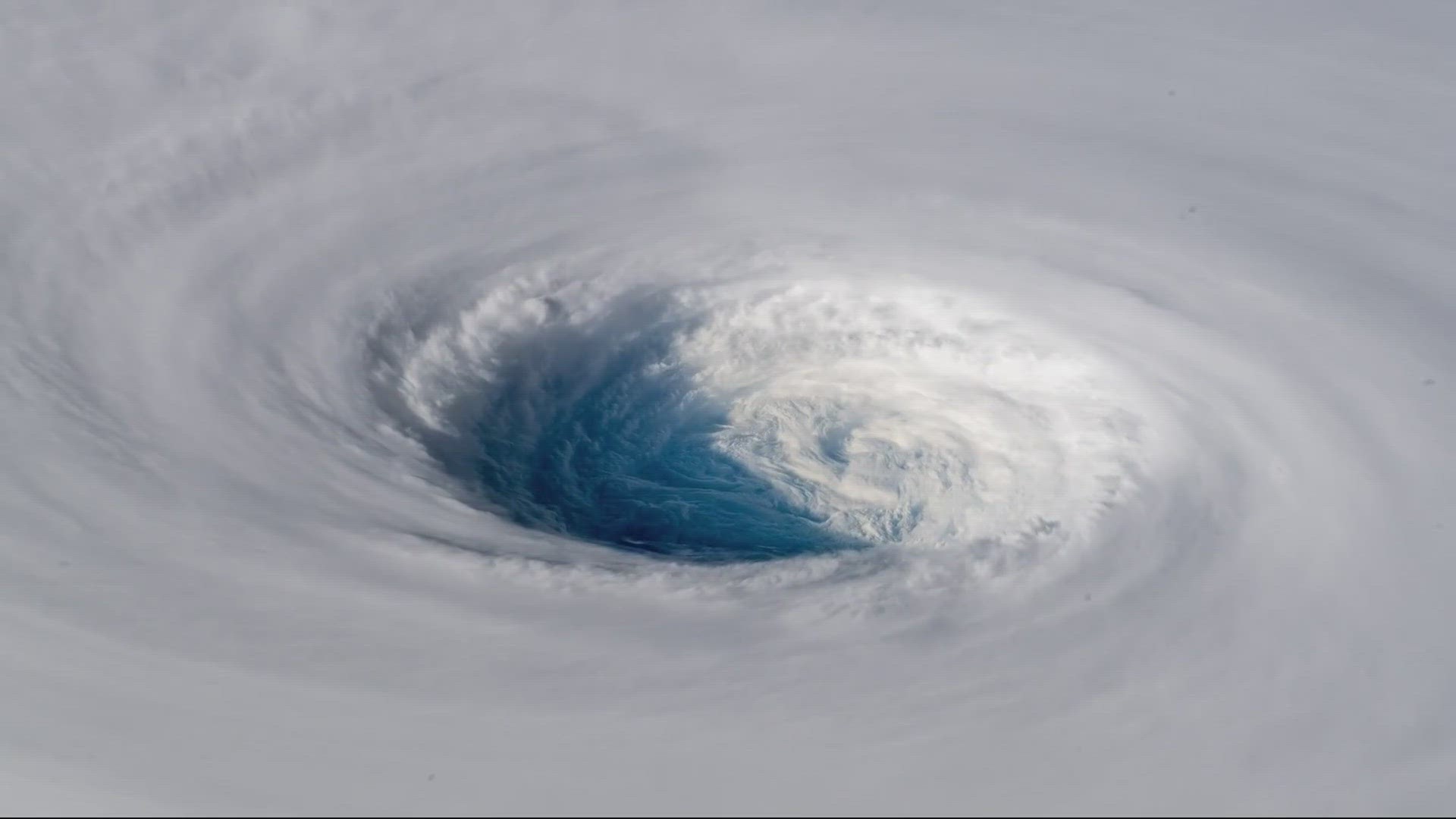JACKSONVILLE, Fla. — Scientists from the National Oceanic and Atmospheric Administration are showing us the number of storms and hurricanes they are expecting for the 2023 Atlantic hurricane season.
NOAA is forecasting 12-17 named storms, 5-9 hurricanes, and 1-4 major hurricanes. The 30-year average calls for a season with 14 named storms, 7 hurricanes, and 3 major hurricanes.
Therefore, NOAA is calling for a near-normal 2023 Atlantic hurricane season. This forecast is similar to what Colorado State University scientists predicted back in mid-April with their outlook calling for a near or slightly-below average season.
The message, just like previous seasons, remains the same.
It only takes one.
If you live in a hurricane-prone area, it's best to always be prepared and know what hazards could affect you and your family.
A transition to El Nino this summer is expected to limit the number of storms and strength of the tropical systems forecast.
El Nino normally brings the Pacific Jet Stream farther south bringing high wind shear across the Gulf of Mexico and Caribbean Sea. Strong wind shear can help to rip apart tropical systems, which is why typical El Nino years tend to produce less activity or below-normal seasons.
However, the oceans are warmer than average as they have been in recent years. Sea surface temperatures are running above average across most of the tropical Atlantic and into the Gulf of Mexico. Storms get their energy from the warm tropical waters, so given this additional fuel for storms there's always the chance a tropical system can overcome El Nino's wind shear.
“With a changing climate, the data and expertise NOAA provides to emergency managers and partners to support decision-making before, during and after a hurricane has never been more crucial,” said NOAA Administrator Rick Spinrad, Ph.D. “To that end, this year we are operationalizing a new hurricane forecast model and extending the tropical cyclone outlook graphic from five to seven days, which will provide emergency managers and communities with more time to prepare for storms.”
And with the hurricane season just one week away, the area off the Southeast coast is a sign that our waters are ripe and ready for development. This week's chance of development is not likely to become a subtropical or tropical storm because it is associated with a frontal system.
Below is the definition of a tropical cyclone.



